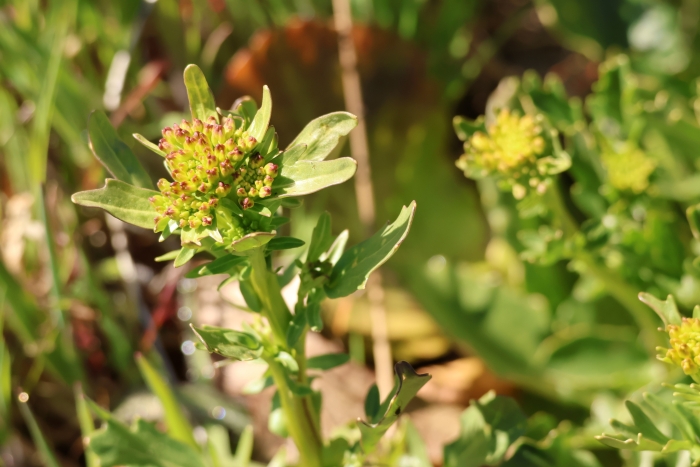American Yellowrocket
(Barbarea orthoceras)
American Yellowrocket (Barbarea orthoceras)
/
/

Millie Basden
CC BY 4.0
Image By:
Millie Basden
Recorded By:
Copyright:
CC BY 4.0
Copyright Notice:
Photo by: Millie Basden | License Type: CC BY 4.0 | License URL: http://creativecommons.org/licenses/by/4.0/ | Rights Holder: Millie Basden | Publisher: iNaturalist | Date Created: 2023-04-19T08:41:46-07:00 |
























Estimated Native Range
Summary
Barbarea orthoceras, commonly known as American yellowrocket, is a perennial herb native to moist meadows, streambanks, and wetland margins in North America, particularly in the western United States and parts of Asia. It typically grows to a height of 24 inches (61 cm) with branching stems that bear clusters of bright yellow, four-petaled flowers from late spring to early summer. The foliage consists of basal rosettes of oval leaves with rounded lobes, while the fruit is a narrow silique that can reach up to 2 inches (5 cm) in length.
American yellowrocket is appreciated for its vibrant yellow flowers and its ability to thrive in wet conditions, making it suitable for rain gardens and areas with poor drainage. It is also valued for its edibility; the leaves can be consumed raw or cooked, offering a peppery flavor, and the roots are known for their horseradish-like taste. This plant is relatively low-maintenance, requiring consistently moist soil and full sun to part shade. While it is not commonly afflicted by diseases, it can be susceptible to pests such as flea beetles. In some regions, it may spread aggressively and should be monitored to prevent unwanted naturalization.CC BY-SA 4.0
American yellowrocket is appreciated for its vibrant yellow flowers and its ability to thrive in wet conditions, making it suitable for rain gardens and areas with poor drainage. It is also valued for its edibility; the leaves can be consumed raw or cooked, offering a peppery flavor, and the roots are known for their horseradish-like taste. This plant is relatively low-maintenance, requiring consistently moist soil and full sun to part shade. While it is not commonly afflicted by diseases, it can be susceptible to pests such as flea beetles. In some regions, it may spread aggressively and should be monitored to prevent unwanted naturalization.CC BY-SA 4.0
Plant Description
- Plant Type: Herb
- Height: 1-3 feet
- Width: 1-2 feet
- Growth Rate: Moderate
- Flower Color: Yellow
- Flowering Season: Spring, Summer
- Leaf Retention: Semi-deciduous
Growth Requirements
- Sun: Full Sun
- Water: Medium
- Drainage: Medium
Common Uses
Bee Garden, Butterfly Garden, Low Maintenance, Water Garden
Natural Habitat
Moist meadows, streambanks, and wetland margins
Other Names
Common Names: American Winter Cress, Erectpod Wintercress, Wintercress, 나도냉이, Erect-Fruit Wintercress, Northern Wintercress, Straight-Horned Wintercress
Scientific Names: , Barbarea orthoceras, Barbarea americana, Barbarea apoiensis, Barbarea cochlearifolia, Barbarea hondoensis, Barbarea orthoceras subsp. dolichocarpa, Barbarea orthoceras subsp. dolichocarpa, Barbarea orthoceras var. dolichocarpa, Barbarea orthoceras var. formosana
GBIF Accepted Name: